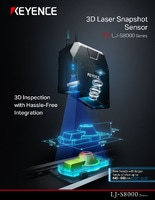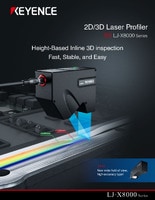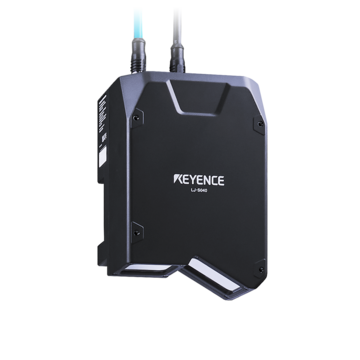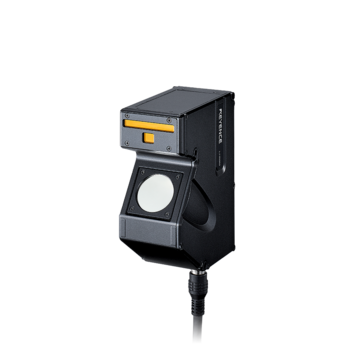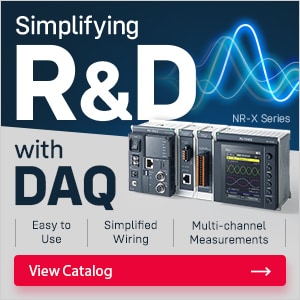Measurement Sensors
Dimension Measurement
Displacement Measurement
Revolutionizing Engine Block Inspection with Automation
Engine block inspection is a process in the automotive manufacturing industry that determines the overall performance and longevity of an engine. Even the smallest defect, whether that be a crack, flawed corner, or misalignment, can lead to catastrophic failure. If not failure, it can result in a costly recall.
We’re here to provide you with more details.
Reach out today!

The Importance of Engine Block Inspection in Automotive Manufacturing
Traditional inspection methods rely heavily on manual labor. This means that the quality of the engine inspection was based entirely on the knowledge and skill of the human involved. Engine design has evolved and become more intricate; manufacturers need a way to keep up with the industry.
Automated engine inspection systems use pre-programmed quality standards to detect defects in real time. These systems are faster and more accurate than any human counterpart, reducing errors and creating a more efficient production line, saving both time and money.
Key Features of Automated Engine Block Inspection Systems
Automated engine block inspection systems deliver speed and precision to modern manufacturing. By combining advanced tools and technologies, they can ensure that every engine block meets strict quality standards. Some of the key features of an automated engine block inspection are:
High-Precision Laser Measurement
Non-contact Laser measurement devices provide micron-level accuracy during engine block inspection, ensuring consistent thickness and dimensional readings across production lines.
AI-Powered Vision Systems
High-resolution cameras and AI algorithms instantly detect cracks, surface flaws, and misalignments while adapting quickly to new cylinder block and head designs.
Optimized Lighting for Accurate Detection
Multi-angle and diffuse lighting reduces glare and enhances defect visibility when inspecting engine blocks, particularly on reflective metal surfaces.
Integration with Robotic Systems
Robotic arms and precision conveyors seamlessly position and rotate blocks, streamlining the engine inspection process for thorough, consistent results.
Adaptability to Complex Engine Designs
Multi-camera systems and laser scanners handle varying engine shapes, intricate geometries, and cylinder block and head configurations with precision.
Real-Time Data Processing and Reporting
Systems provide instant feedback during engine block inspection. This helps manufacturers identify defects early, reduce scrap rates, and lower costs.
We’re here to provide you with more details.
Reach out today!

High-Precision Analysis of Cylinder Blocks
When it comes to inspecting cylinder blocks and heads, high-precision analysis is needed to ensure accuracy and performance. Advanced laser measurement devices and machine vision systems let manufacturers detect flaws and inaccuracies quickly. Laser scanners create detailed 3D profiles of cylinder blocks and heads to help identify cracks, voids, and surface irregularities.
These systems easily handle non-uniform surfaces and are adaptable to varying engine block designs. Immediate data processing provides real-time analysis and feedback, which notifies manufacturers of issues during the engine block inspection.
Integration with Automotive Manufacturing Lines
Automated engine inspection systems have been designed to integrate into existing production lines. They use synchronized laser measurement tools, multi-camera setups, and robotics systems. These systems are highly adaptable, and using AI-driven tools on select devices quickly adapts to new designs and varying component placements. This helps minimize downtime.
Similar industries, like building material manufacturing, have found success in implementing this technology, and it is well-suited to the automotive sector.
Benefits of Automating Engine Block Inspections
Automated engine block inspection offers advantages to the automotive industry that manual inspection can no longer provide. By using tools like 3D laser measurements, a system can check for flaws and other abnormalities. Real-time detection helps manufacturers minimize costly rework and reduces production delays. These systems are easily scalable and can adapt to the most complex engine designs. As they are automated, they can also maintain and produce consistent products across the board.
If automated engine block inspection is your next step, look no further than KEYENCE. Contact us today to see how KEYENCE can elevate your inspection process.
Contact us to learn more about how our advanced technology can help take your business to the next level.
Contact Us
Related Products
Applications
Dimension Measurement
- Thickness and Width Measurement
- Step Height Measurement
- Inner and Outer Diameter Measurement
- Measuring Angles
- Meandering/Edge Measurement
Displacement Measurement
- Positioning and Stroke Length Measurement
- Vibration and Runout Measurement
- Deflection Measurement
- Measuring Eccentricity

